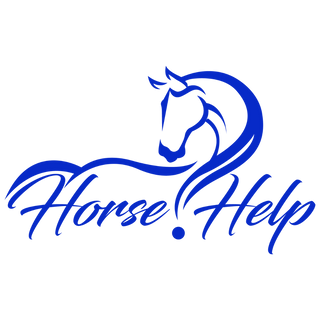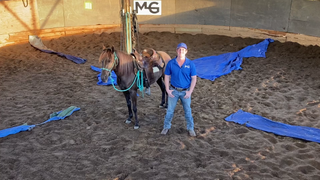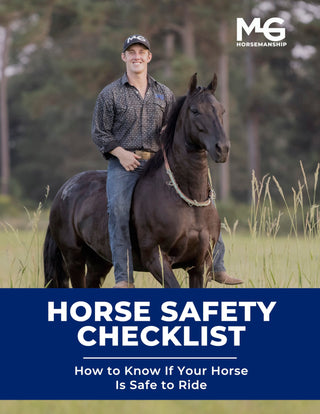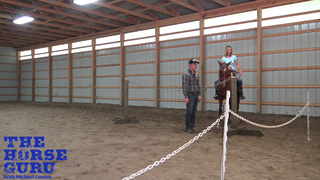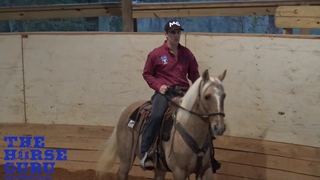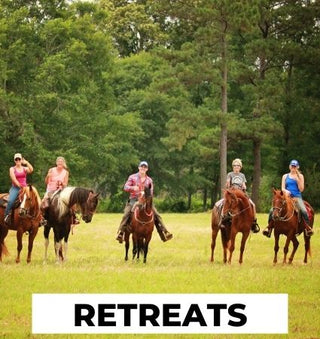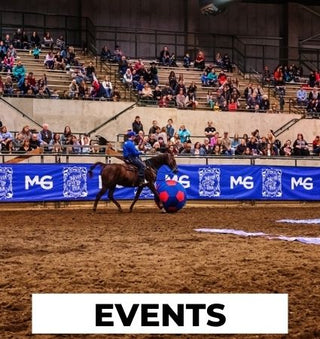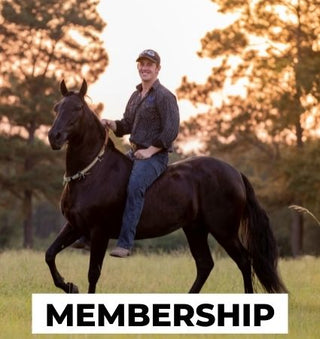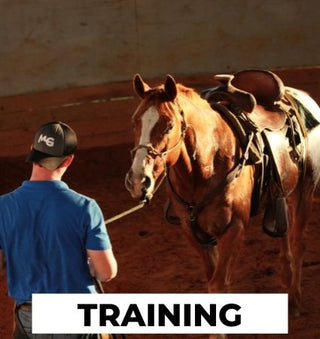Watch the Video Here or continue reading below!
When it comes to starting colts and establishing a solid foundation, the very first step in Michael Gascon’s program is what he calls “Preschool.” Whether you’re working with a completely green horse or one that’s been ridden before, preschool is about evaluating the horse’s respect level, mindset, and readiness for further training.
Let’s break down the do’s and don’ts of preschool for horses, what it means, how to set it up, and what to watch out for.
🐴 What Is Preschool for Horses?
Preschool is the introductory phase of colt starting—before the horse is ridden, bridled, or even led with pressure. It’s a chance to observe how the horse behaves when asked to move freely and navigate simple, controlled obstacles like tarps.
At its core, preschool is a free lunging evaluation—a safe and respectful way to understand a horse’s instincts and reactions.
✅ The Do’s of Preschool Training
1. Start With a Naked or Lightly Tackled Horse
If the horse is brand new to training, start with nothing on their face—no halter, no saddle. If they’ve already been ridden and are attending a clinic, Michael recommends cinching on a saddle securely and tying the halter to the saddle for minimal interference.
2. Observe Respect and Movement
The goal is not to exhaust the horse—it’s to answer key questions:
-
Will they move away from pressure?
-
Can they go over a tarp instead of through or over you?
-
Do they have enough respect to prioritize you over the scary stuff?
3. Use the Flag Stick Wisely
Position your body to point in the direction you want the horse to go. Use a flag stick in the opposite hand to apply gentle pressure and encourage movement. This isn't about breaking them down—it’s about building trust and respect.
4. Watch for Willingness
You’re looking for a horse that will:
-
Cross over scary obstacles like tarps
-
Change directions when asked
-
Stop and be caught without fear
The goal is calm, willing responses with minimal effort.
5. Approach the Withers
When it's time to catch the horse, approach their withers—the balance point of the drive line. Step slightly ahead to encourage them to stop, or behind to redirect movement. This helps you control the horse’s feet while keeping things safe and predictable.
🚫 The Don’ts of Preschool Training
1. Don’t Step in Front of the Drive Line
Avoid stepping directly in front of the shoulder or chest while trying to move the horse forward. That creates confusion and can cause the horse to stop or push back.
2. Don’t Desensitize in the Wrong Place
When introducing objects like flag sticks or tarps, don’t stand in a place where you could be in harm’s way if the horse chooses fight over flight. Always desensitize from a safe position.
3. Don’t Rely on Excessive Energy
Preschool is not about running the horse down. It’s not a contest of endurance. If the horse doesn’t respond at first, repeat the cue, but don’t increase intensity to the point of exhaustion. Use minimum effective pressure.
4. Don’t Skip the Warning Signs
If a horse refuses to cross a tarp during preschool, they’re not ready for the saddle. If you can’t move their feet on the ground, you won’t control them from the saddle—especially from their blind spot.
🧠 Why Preschool Matters: Mindset Before Miles
Whether you're training one horse or many, preschool sets the tone for the entire journey. You’re not just checking obedience—you’re assessing respect, fear, trust, and communication.
“If you put that filly out with a group of mares, they’ll figure out a pecking order. Preschool helps your horse figure out where YOU stand in that totem pole.” – Michael Gascon
📋 Final Thoughts: Respect Over Obstacles
Imagine the first thing your horse learns is not “don’t worry about me,” but rather: “Respect me and move.” That’s how Michael Gascon builds confident, respectful partners from the very start.
So remember—preschool is not about wearing them down, it’s about reading your horse. Do they respect you enough to follow your lead, even when it’s uncomfortable?
If yes, congratulations—you’ve passed preschool.
